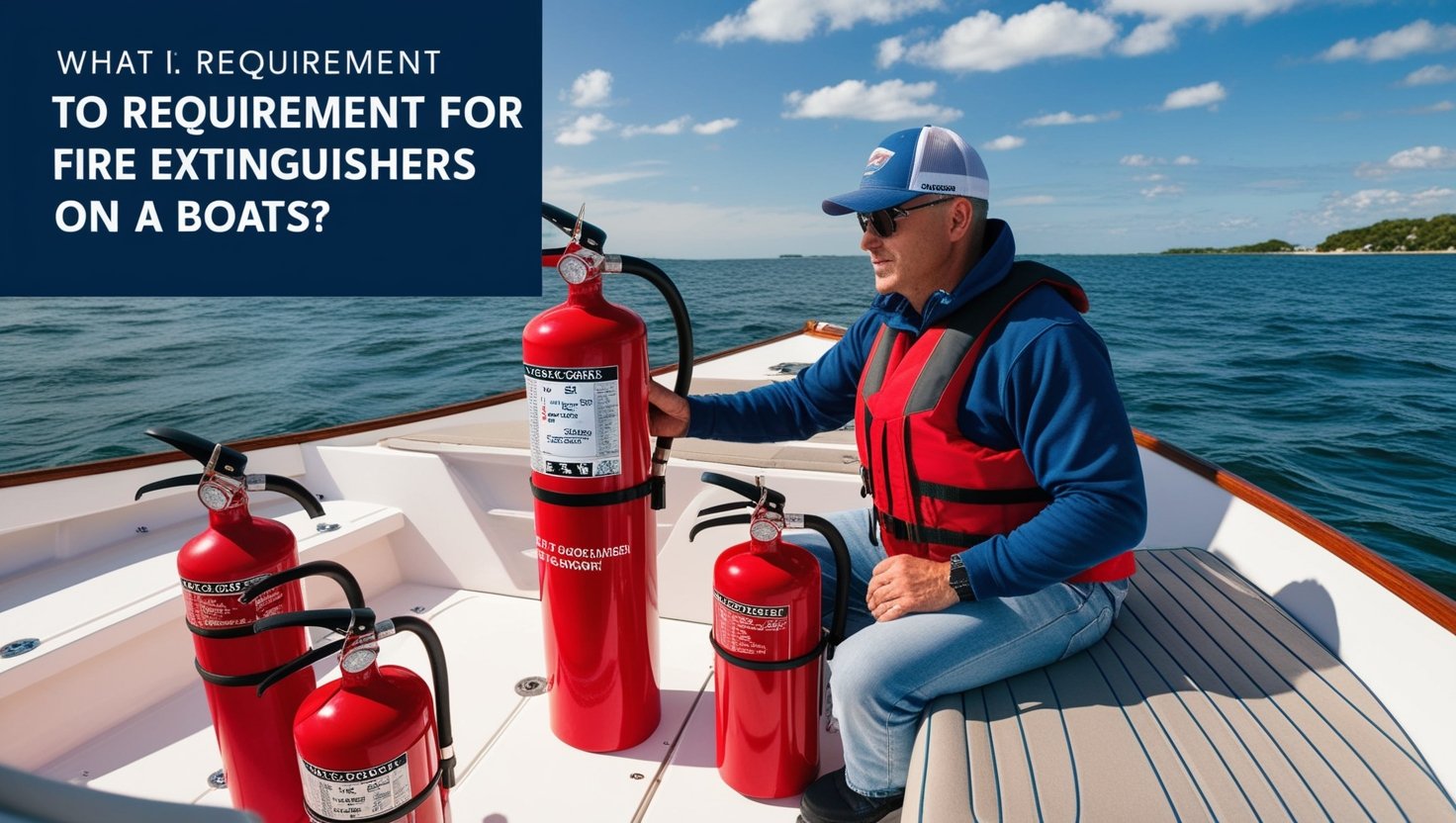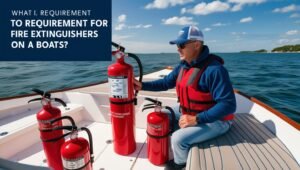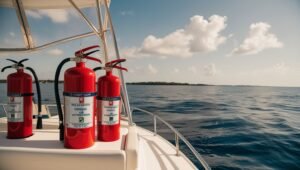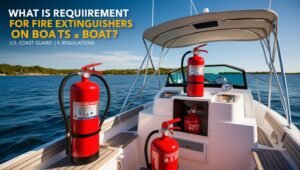
What is the need for fire extinguishers on a boat?
Boating is a popular and enjoyable activity, offering the perfect combination of relaxation and adventure. However, with the joy of cruising the open waters comes a responsibility to ensure safety. An important safety measure is to have adequate fire extinguishers on board. In this comprehensive guide, we’ll review the essential requirements for fire extinguishers on boats, helping you comply with regulations while protecting life and property.

Understanding the importance of fire safety on boats
Boats, whether large or small, are susceptible to fire, making it important to have effective fire extinguishers on hand. Boat fires can be caused by a variety of factors, including fuel leaks, electrical faults, or even wet accidents. The confined space of the boat can make the situation worse, allowing the fire to spread quickly. Therefore, having the right fire extinguishers and knowing how to use them is not just a legal requirement but a matter of life and death.
Regulatory requirements for fire-extinguishing on boats
Federal Requirements: US Coast Guard (USCG) Regulations
In the United States, the US Coast Guard (USCG) sets standards for safety equipment on recreational boats. According to USCG regulations, the type and number of fire extinguishers required on a boat depends on the boat’s length, propulsion system, and presence of enclosed spaces. Here is an error:
Boats under 26 feet At least one B-I type fire extinguisher is required.
Boats 26 to 40 feet At least two B-I-type fire extinguishers or one B-II-type fire extinguisher.
Boats 40 to 65 feet At least three B-I type fire extinguishers or one B-I type and one B-II type fire extinguisher.
It is important to note that these regulations apply to boats with engines, including inboard, outboard, and stern drives. If your boat has a fixed fire extinguisher system in the engine compartment, you may be able to carry less portable extinguishers.
Classification of fire extinguishers
Fire extinguishers are classified based on the type of fire they are designed to fight. On boats, Class B and Class C fires are most common due to the presence of flammable liquids and electrical equipment. Here’s what you need to know:
Class B Fire: Include flammable liquids such as gasoline, oil, and diesel fuel. This is the most likely fire on a boat and requires fire extinguishers rated for Class B fires.
Class C Fire Involves electrical equipment, such as wiring, circuit breakers, and appliances. A Class C-rated fire extinguisher is essential for fighting electrical fires that pose a risk of electric shock.
The B-I or B-II classification indicates the size and capacity of the fire extinguisher. A B-I extinguisher has less capacity than a B-II but is suitable for fighting both Class B and C fires.
Placement and Access
Having the right number and type of fire extinguishers is very important, but their placement on the boat is just as important. Fire extinguishers should be:
Easily accessible Fire extinguishers should be kept in places where they are easily accessible in case of emergency. Common areas include near the helm, in the galley, and sleeping quarters.
Properly Mounted Fire extinguishers should be mounted in a secure bracket to prevent them from moving around or being misplaced in rough seas.
Visible and labeled Ensure the location of the fire extinguisher is marked and visible to all passengers and crew.
Maintenance and Inspection
Regular maintenance and inspection of fire extinguishers are essential to ensure they are working properly when needed. According to USCG regulations, fire extinguishers must be inspected monthly:
Adequate pressure Make sure the extinguisher is fully charged and the pressure gauge is in the green zone.
No Physical Damage Check for dents, corrosion, or other physical damage that could impair extinguisher function.
Clear instructions Make sure labels and operating instructions are legible.
Tamper Seal Intact Verify that the tamper seal is intact, indicating that the extinguisher has not been used or tampered with.
In addition to monthly checks, a more thorough annual inspection by a qualified professional is recommended.
Fire extinguishers for various types of boats
Different types of boats have unique requirements for firefighting based on their size, construction, and use. Here are some specific considerations:
Sailboats Sailboats with one auxiliary engine require at least one B-I fire extinguisher. The extinguisher should be easily accessible from both the cockpit and the cabin.
Personal Watercraft (PWC): PWCs, such as Jet Skis, are required to carry B-I fire extinguishers. The small size of PWCs makes it important that fire extinguishers are securely installed and easily accessible.
Houseboats Due to the presence of enclosed spaces and potential fuel sources, houseboats typically require multiple B-I or B-II fire extinguishers. They should be strategically placed throughout the vessel, including in the galley, sleeping areas, and engine compartment.
Commercial ships: Commercial ships have more stringent fire safety requirements, often requiring multiple fire extinguishers, fire suppression systems, and regular safety drills.
Understanding the limitations of fire extinguishers
Although fire extinguishers are an important safety tool, it is important to understand their limitations. Fire extinguishers are designed to deal with small, contained fires. If the fire is large or spreading rapidly, the priority should be to get the boat out and call for emergency assistance. Additionally, using the wrong type of extinguisher can make the situation worse. For example, using a water-based extinguisher on a Class B or C fire can spread flames or cause an electric shock.

Best Fire Safety Practices on Boats
In addition to the required fire extinguishers, there are several great ways you can increase fire safety on your boat:
1. Conduct regular fire drills.
Make sure all passengers and crew know how to find and operate fire extinguishers. Regular fire drills can help everyone stay calm and act quickly in an emergency.
2. Install smoke and carbon monoxide detectors.
Smoke and carbon monoxide detectors are essential for early fire detection, especially in enclosed cabins. Make sure these detectors are installed and tested regularly.
3. Maintain the electrical system
Regularly inspect and maintain the boat’s electrical system to prevent malfunctions that could lead to fires. Pay special attention to wiring, circuit breakers, and battery connections.
4. Store flammable liquids safely.
Flammable liquids, such as gasoline and propane, should be stored in appropriate containers and kept away from ignition sources. Always ventilate areas where flammable liquids are stored.
5. Educate passengers.
Before sailing, educate all passengers on fire safety procedures, including how to use a fire extinguisher, where to find life jackets, and how to safely evacuate the boat.

The result
Fire safety is a major concern for all boaters. Understanding and complying with firefighting requirements not only fulfills legal obligations but also provides peace of mind knowing you are prepared for an emergency. By equipping your boat with the right fire extinguishers, properly maintaining them, and following best practices, you can significantly reduce the risk of fire-related disasters on the water.
